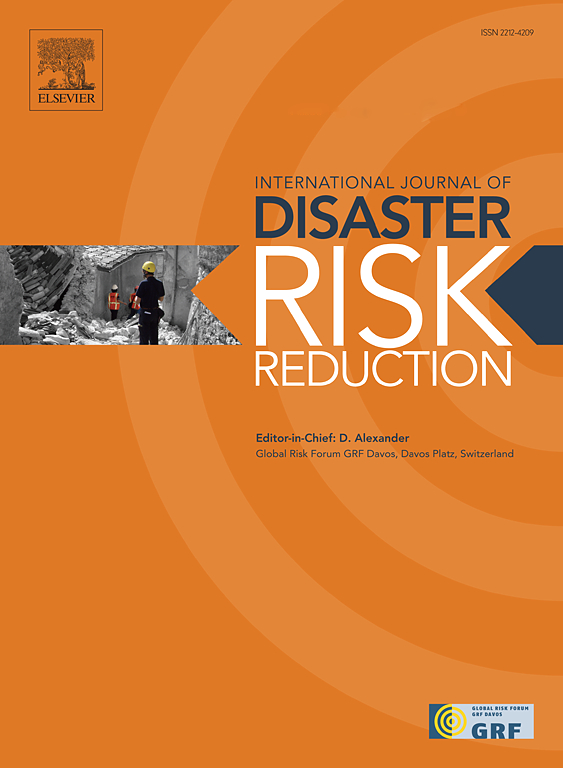Mining socioenvironmental drivers of bias in social media rescue data for fairness-aware modeling: A case study of Hurricane Harvey
IF 4.2
1区 地球科学
Q1 GEOSCIENCES, MULTIDISCIPLINARY
International journal of disaster risk reduction
Pub Date : 2025-07-19
DOI:10.1016/j.ijdrr.2025.105717
引用次数: 0
Abstract
Researchers now use AI to extract valuable insights from social media data for rapid rescue and emergency management. However, social media users are not sampled in a way that represents the entire population. This study establishes baseline Expected Rescue Request frequencies using social media data to address two critical knowledge gaps: (1) whether systematic differences in the expected rescue request frequencies during disasters exist among communities of different social-environmental characteristics, and (2) which of these characteristics reflect data representation biases and should be treated as sensitive attributes in fairness-aware AI models. Using 35 geographical, socioeconomic, and digital access variables alongside rescue request tweets from the 2017 Hurricane Harvey, a novel fairness measurement index (Rescue Request Difference) was developed and analyzed through regression and Random Forest modeling to balance predictive power, interoperability and transparency. Results showed that overserved communities exhibited higher proportions of physically and financially vulnerable populations, flood-prone geography, limited digital access, and single-family housing. Key attributes such as "% Minority" and "Road density" were identified as sensitive features requiring fairness rectification in predictive models. Limitations include reliance on a single case study and social media data biases. Future work should integrate multi-source data (e.g., 911 calls, volunteer reports) to strengthen the fairness-aware modeling framework.

挖掘社会媒体救援数据中偏见的社会环境驱动因素,以实现公平意识建模:以飓风哈维为例
研究人员现在使用人工智能从社交媒体数据中提取有价值的见解,用于快速救援和应急管理。然而,社交媒体用户的抽样并不能代表整个人口。本研究利用社交媒体数据建立了基线预期救援请求频率,以解决两个关键的知识缺口:(1)灾害期间不同社会环境特征的社区之间是否存在预期救援请求频率的系统性差异,以及(2)这些特征中哪些反映了数据表示偏差,应被视为公平感知AI模型中的敏感属性。利用35个地理、社会经济和数字访问变量以及2017年飓风哈维的救援请求推文,开发了一种新的公平衡量指数(救援请求差异),并通过回归和随机森林建模进行了分析,以平衡预测能力、互操作性和透明度。结果表明,服务过剩的社区表现出更高比例的物质和经济脆弱人口、易受洪水影响的地理位置、有限的数字访问和单户住房。关键属性,如“% Minority”和“Road density”被确定为需要在预测模型中公平纠正的敏感特征。局限性包括对单一案例研究的依赖和社交媒体数据的偏见。未来的工作应该整合多源数据(例如,911呼叫,志愿者报告),以加强公平意识建模框架。
本文章由计算机程序翻译,如有差异,请以英文原文为准。
求助全文
约1分钟内获得全文
求助全文
来源期刊

International journal of disaster risk reduction
GEOSCIENCES, MULTIDISCIPLINARYMETEOROLOGY-METEOROLOGY & ATMOSPHERIC SCIENCES
CiteScore
8.70
自引率
18.00%
发文量
688
审稿时长
79 days
期刊介绍:
The International Journal of Disaster Risk Reduction (IJDRR) is the journal for researchers, policymakers and practitioners across diverse disciplines: earth sciences and their implications; environmental sciences; engineering; urban studies; geography; and the social sciences. IJDRR publishes fundamental and applied research, critical reviews, policy papers and case studies with a particular focus on multi-disciplinary research that aims to reduce the impact of natural, technological, social and intentional disasters. IJDRR stimulates exchange of ideas and knowledge transfer on disaster research, mitigation, adaptation, prevention and risk reduction at all geographical scales: local, national and international.
Key topics:-
-multifaceted disaster and cascading disasters
-the development of disaster risk reduction strategies and techniques
-discussion and development of effective warning and educational systems for risk management at all levels
-disasters associated with climate change
-vulnerability analysis and vulnerability trends
-emerging risks
-resilience against disasters.
The journal particularly encourages papers that approach risk from a multi-disciplinary perspective.
 求助内容:
求助内容: 应助结果提醒方式:
应助结果提醒方式:


